The Hidden Cost Of Captivity- Oral Health of Killer Whales Exposed
POST UPDATED APRIL, 2012:
Part of our mission here at The Orca Project is to delve into the detrimental effects that captivity brings to orcas and other cetaceans at marine mammal parks. In this installment we take a look at the oral health of orcas (Killer Whales); the pervasive degradation, its causes and potential consequences.
The PRIMARY risk factors for developing poor oral health conditions in captive orcas (Killer Whales) are AGE and CAPTIVITY. The longer animals are in confinement, the higher the risk of developing problems. Definitively, there is a high ‘prevalence’ of poor dentition (fractured and broken teeth) in a majority of captive orcas. However, there is an unknown rate of new occurrences since orca mortality decreases the ‘prevalence’ of broken teeth (dead whales get removed from the population, and younger whales have better teeth). It is speculated the risk increases for the male gender, based on increased testosterone levels and subdominant status. Additionally, social strife and moving animals from park to park may increase risk, because every time an animal moves, it must “reestablish” itself on the social hierarchy. This is more common with mid-range and lower animals within the social hierarchy. Upper echelon whales may have less of a need to establish themselves as they are already at the top of the society, therefore, subdominant animals would more susceptible to these problems.
The impact that captivity has on the teeth and jaws of various orcas can be seen in the following Photo Gallery:
SeaWorld, Six Flags and other marine mammal parks have managed to keep this cloaked in relative secrecy: Broken and fractured teeth usually occurs from common threat displays known as “barking” or “jaw popping” as they chomp down on steel gates that separate orcas in an effort to establish dominance. Dental fragments have been retrieved from the bottom of the pool after such displays and while this behavior can temporarily alleviate stress, it generates additional stress in the long run — a vicious cycle.
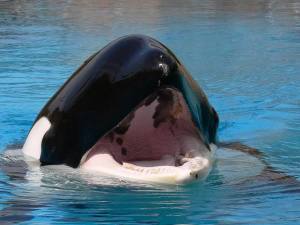
Chronic pain associated with poor dental health can lead to destructive behaviors such as grinding down the jaw itself.
The resulting damage and chronic pain can lead to behaviors of grinding down the jaw itself. In the adjacent image (See Photo) you can see how this orca, Nootka 5, has worn the jaw. Nootka 5, who died in January, 2008 at the age of 32 was observed using the corner of the performance stage like a big file; swimming by at high-speed with an open mouth biting the corner of stage and wearing down the bone.
Additional contributors to the poor oral conditions of captive orcas include tooth grinding, tooth “flattening” and tooth “drilling”. Few people are aware of the practice where captive orcas routinely have holes drilled in their teeth (Pulpotomy) as well as “grinding” or “flattening” of their teeth, and fewer more understand, or have even thought about, how the holes are drilled. Trainers are forbidden to speak of this practice publicly. SeaWorld trainers use a variable-speed tool (similar to a Dremel tool) to perform this Pulpotomy with a stainless drill bit attached.
The whales are conditioned to “accept” the noise, heat, vibration and obvious pain associated with drilling vertically through the tooth column and into the fleshy pulp below. Success is measured by blood spilling out of the hole, in which case it’s apparent the bore is complete. – Former SeaWorld trainer.
Once the teeth are cracked, it leaves pulp exposed which will lead to infection unless treated. Since they cannot perform a root canal on a captive killer whale, they perform a pulpotomy. This entire procedure is performed without a local anesthetic for reasons which are not fully understood. For example, while the teeth of many of SeaWorld’s orcas are in “train-wreck” status, drilling and flushing routinely takes place regardless of whether the teeth are infected or in need of this procedure. The training and education staff at SeaWorld contends that the thrice daily “tooth flushes” are “superior dental care”. What they don’t tell you is that the teeth have holes in them, and if the impacted fish isn’t flushed with a Waterpick daily, an infection would likely occur. This is done by filling the reservoir of a device with a Betadine solution which is pumped down into the jaw.
In the case of Tilikum, the orca involved in the February 24, 2010 death of trainer Dawn Brancheau, this procedure is, or was, performed three times a day. At the time of his involvement in her death, it is also known that Tilikum was ill and receiving antibiotics and antifungal drugs to treat an unknown inflammatory issue. According to a review of his medical records, Tilikum’s teeth were allegedly ruled out by using a thermography unit.
In November, 2011 the young nine-year-old male Ikaika, who was on a breeding loan to Marineland of Canada, was returned to SeaWorld SanDiego. He has been plagued by dental issues most of his life:
“Ikaika’s problem is with the roots of various teeth in his mouth. These roots are open, allowing bacteria to enter and cause infections. The normal course of treatment is to flush his teeth consistently, numerous times daily, and treat him with antibiotics and pain medications” ~said Lanny Cornell, a veterinary consultant to Marineland.
Read more about Ike’s health issues HERE.
Twenty-five year old female Kalina, dubbed the original “Baby Shamu” died on October 4, 2010 of Acute Bacterial Septicemia. She was the first orca born and raised in captivity at SeaWorld Parks. Prior to her untimely death she had five teeth drilled and four additional teeth pulled. She was the fourth orca to die at SeaWorld Parks within 4 months in 2010.
And the proliferation of poor dental health of captive killer whales doesn’t end there. According to SeaWorld’s internal documents, most orcas now living in captivity have chronic dental problems. The animal profiles maintained on each orca outline the facts. For example; the young male Tuar, age 13, who resides at SeaWorld, San Antonio, Texas has 14 drilled teeth, another is cracked and he has worn his lower teeth from extensive rubbing and picking at paint at the bottom of the pools. Kayla, a 23 year old female orca in Orlando, Florida has 12 of her teeth drilled, another is cracked, and one is missing. In July 1991, Kayla’s mom, the 17 year-young (and pregnant) Kenau began receiving treatment for an infected tooth at SeaWorld Orlando. Two weeks later she died of Hemorrhagic Bacterial Pneumonia (see necropsy report HERE). Her 110 lb, 12 month-old male fetus appears to have been alive up until the time of her death.
And more from SeaWorld’s “Living” orcas:
Keet, M, 19— Dental work done on 11 teeth and missing part of another.
Unna, F, 15— Nine teeth drilled. Wear on lower teeth.
Katina, F, 37— Two badly chipped teeth and another broken at the base.
Kasatka, F, 36— Missing three teeth on lower back right jaw.
Orkid, F, 23— Had one tooth removed in 1995.
Corky II, F, 45— Worn teeth on lower and upper jaw. Many decayed and discolored.
Kyuquot, M, 20— No teeth drilled- small chip on one. Extensive erosion and yellowing of lower teeth and back upper teeth at and below gum line.
UPDATE from The Orca Project- November 2011: During testimony at the SeaWorld vs. OSHA hearings, SeaWorld’s vice president of veterinary services, Dr. Chris Dold confirmed the practice of drilling orca teeth after they break them on the surfaces of the concrete pools and during interactions with other whales. He also admitted under oath that about 14 of 20 orcas at SeaWorld require antiseptic flushes of their drilled teeth.
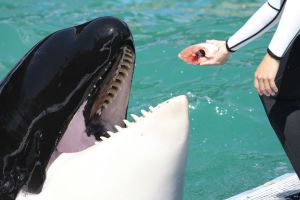
Lolita: After 40 years in captivity, her isolation, devoid of social dominance issues may factor in her overall good dental health.
Although Lolita, the sole orca at Miami Seaquarium has endured 40 years of captivity and has been subjected to numerous other detrimental issues… her teeth appear to be in remarkably good form; the front teeth are barely erupted or worn down. Perhaps this is due to Lolita’s isolation, and lack of a need for social-climbing (no competitors in her facility) or other available mechanism of injury resulting from social-climbing and/or threat displays such as “Jaw-popping”.
–
UPDATE from The Orca Project- March, 2011: The killer whale shows at Miami Seaquarium were cancelled for several weeks in March 2011 while Lolita suffered from a tooth infection. She has since returned to performing. For more information, click HERE to read The Orca Project’s report on these developments.
The absence of these captive environment conditions also holds true for orcas in the wild that do not suffer the same oral degradation as seen in their captive counterparts. When compared, there is a significant prevalence of fractured and broken teeth in captive orcas which can be directly related to their confinement.
SeaWorld, for example, routinely does the following to conceal the teeth issue:
- They will use a juvenile or dominant orca with good teeth for all public photo shoots.
- They will create an angle where the photographer can only see the top jaw (in many cases the damage is to the lower jaw only)
- They won’t let anyone close to an animal, citing “safety” reasons (ironic, given their safety assurances).
- They sell the public on “superior dental care” as they often perform the tooth flush husbandry behavior publicly several times a day.
- PR pictures were always done mindful of avoiding mouth close-ups for fear of inadvertent disclosure.
Numerous studies of both Eastern and Western Medicine practitioners suggest that oral health, and gum disease in particular, are related to serious health conditions in humans and the relationship between teeth and other areas of the body can create a recipe for illness, infection and death. This raises the following question: Is there a correlation between poor dental health in orcas and their premature mortality?
- In the wild, male orcas live an average of 30+ yrs and females 50+ yrs (many can live well into their 80s or 90s) and they do not to suffer the same oral degradation seen in captive orcas.
- In captivity; orcas rarely make it out of their teens and most suffer from extremely poor dentition as we have presented here.
Regardless of whether human oral health studies can be viewed as an accepted truth for orca health, these issues and images are strong evidence illustrating another example of the callous nature of orca confinement… which predominantly results in early death.
For more on this topic please read: ‘Damaged Teeth a Consequence of Captivity for Orcas’ ~ Decoded Science, January 09, 2014 by Elizabeth Batt.
Trackbacks
- Captive Orca “Lolita” Unable to Perform Due to a Tooth Abscess: Why This Is Serious | blog seattlepi com/candacewhiting/
- 上海419,上海419论坛,上海419网,上海419同城交友-Powered by Envo-Business!
- The truth behind SeaWorld – My porpoise-ful life
- Oral Degradation – Inherently Wild
- How Did Sea World’s Orcas Lose Their Teeth?
- The Hidden Cost Of Captivity- Oral Health of Killer Whales Exposed – AG's Orca Research
- Edgy Social » We Still Aren’t Doing Enough to Protect Orcas
- We Still Aren't Doing Enough to Protect Orcas | KJOZ 880 AM CALL IN TOLL FREE 1-844-880-5569
- We Still Aren't Doing Enough to Protect Orcas | Breaking US news
- We Still Aren't Doing Enough to Protect Orcas - LiberalVoiceLiberalVoice — Your source for everything about liberals and progressives! — News and tweets about everything liberals and progressives
- Sharks Love to Disco and 5 Other Nonsense Facts Aquariums and Marine Parks Want You to Believe | Nifymag.com
- Špatný stav zubů | Orcast
- Marineland répond à ses détracteurs dans un dépliant | Manipulation-Marineland
- Au Marineland d’Antibes, les orques mâchent du béton | Free Dolphins Belgium
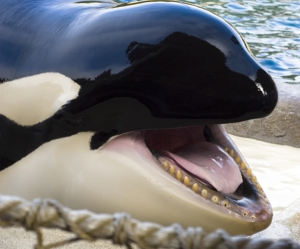
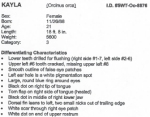
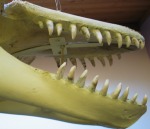

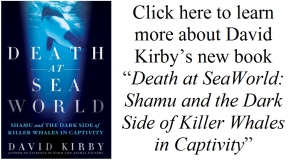

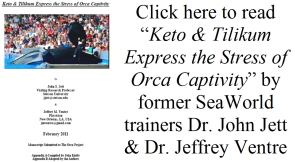
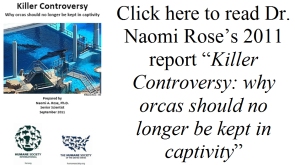



Good article. It is a pity that Orcas do not know how to brush their teeth as a person. But it’s erosion, of course. I collect teeth and various fossils on https://killerwhaletooth.wordpress.com/ I like it
To buy Orca Teeth: https://killerwhaletooth.wordpress.com/
Could not agree with you anymore. Great and insightful article.
who is the author and the publisher